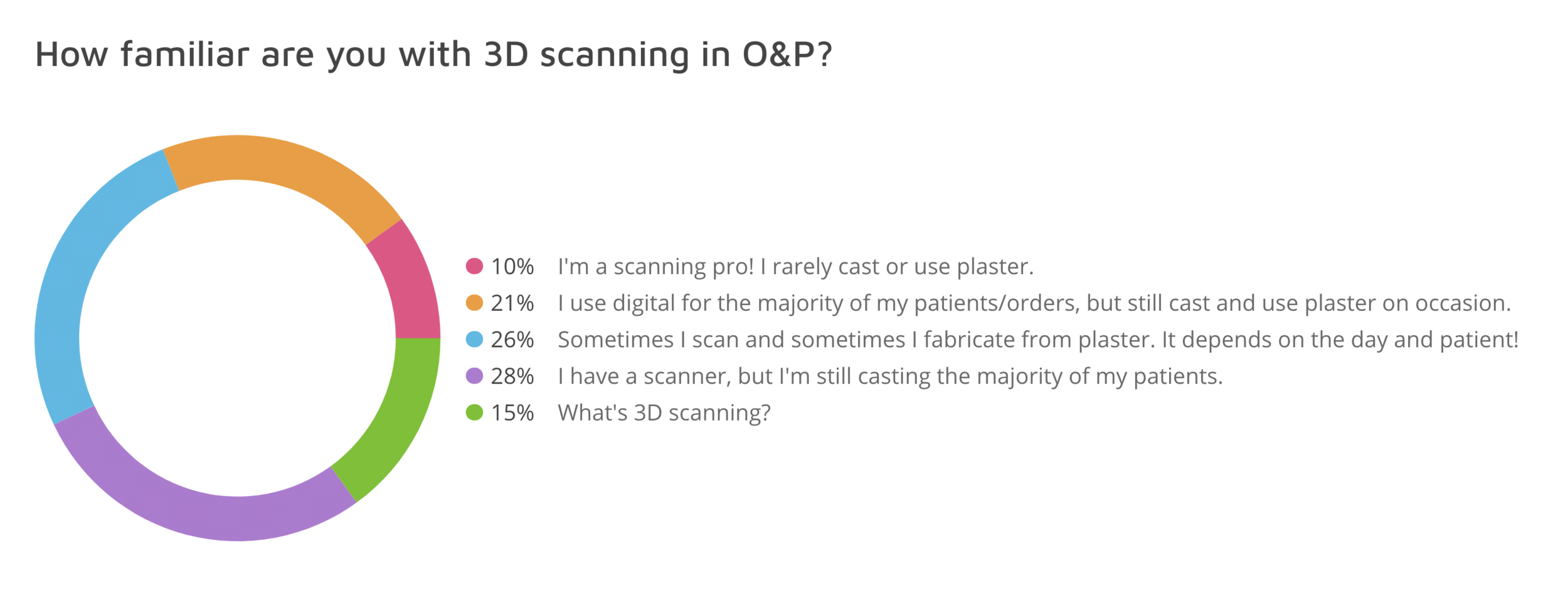How important is 3D scanning in O&P? AOPA Conference Final Poll Results
During the AAOP Virtual Conference in 2020 we asked hundreds of practitioners to give us their take on 3D scanning in the O&P industry. How important is 3D scanning in O&P in 2020? How about the future of O&P? We wanted to know who's scanning, how often, and how important scanning is to the future of the industry. See below for the results!
How familiar are you with 3D scanning in O&P?
Over 75% of the O&P industry is 3D scanning, with a quarter of those respondents indicating they scan the majority of patients they see. 10% of total respondents have almost moved away from plaster altogether.
However, you may note that a little over a quarter of total respondents are still casting the majority of their patients even though they have access to scanning technology. This is an interesting data point because it could suggest that current scanning technology is not meeting the needs of the practitioner, value is misaligned, or the digital workflow isn't cohesive enough to save the practitioner time/money.
Which best describes your current process of fabrication?
Transparently speaking, we may not have enough data here to construct a concrete analysis of the current fabrication landscape in O&P.
Since the majority of respondents indicated they are fabricating in-house, it would be helpful to know what they are fabricating and what they're sending out.
There is also an imbalance between answers that suggest we only have a piece of the picture. A mix of minority results added together leaves too big of a gap to fully understand who is using what for fabrication, and when, and for which patients.
If you're scanning, are you doing your own rectification in-house?
Here at Comb the topic of rectification has been a major discussion over the course of the last few months. Rectification is the second piece of the digital workflow and every practice has a different order of operations when it comes to post-scan procedure.
Some practitioners prefer to do their own rectification, some prefer to send the scan directly to their tech, and others send the scan directly to cfab as a raw unedited file.
Based on the data from a few hundred respondents it looks like the industry is still split between in-house and outsourced rectification. This number could grow as practitioners prioritize their time spent with the patient and as one-stop manufacturers continue to surface.
In your opinion, how important is the Digital Workflow to the future of O&P?
One thing is for certain, scanning and the digital workflow are the future of O&P. Based on the indication from hundreds of respondents, over 80% of O&P professionals believe the digital workflow will lead the industry into a new standard of patient care.
Looking at other data points it's clear that scanning has not been completely adopted across the industry – not by a long shot. However, scanning has widely been a conversation topic and lead many practitioners and practices to explore the prospect of switching over.
The future of digital rests on affordable, easy to use technology and a streamlined digital workflow.
—————
Interested in giving Comb a try?
We are the only O&P scanner that offers a free trial. Create an account, download the app, and start scanning today!





